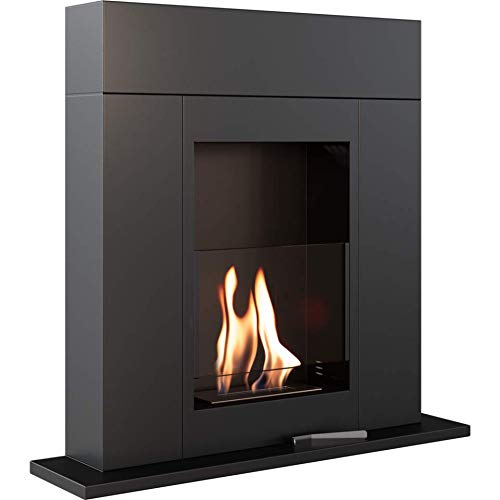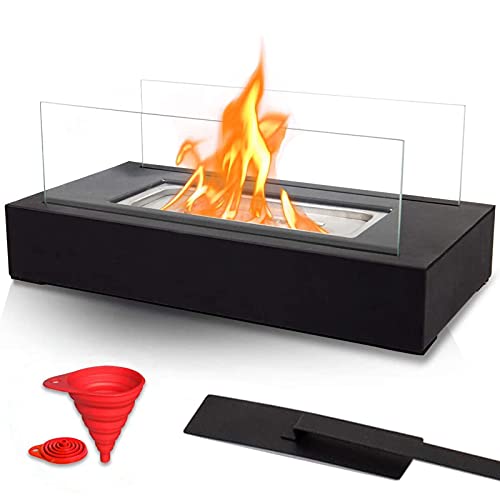How To Outsmart Your Boss With Bio-Fire
페이지 정보

본문
 bio ethanol fireplace indoor-Fires - An Eco-Friendly Alternative to Real Fires
bio ethanol fireplace indoor-Fires - An Eco-Friendly Alternative to Real Fires Biofires are a warm and cosy form of heat with no harmful gases or soot. They are simple to set up as an electric fire.
Biofires are a warm and cosy form of heat with no harmful gases or soot. They are simple to set up as an electric fire.The BARDA contract supports the development of the BioFire emerging CoV panel, a nucleic acid amplifying test that can be used with BioFire filmArray Systems for detection of known and emerging human acoronaviruses in nasopharyngeal or samples as well as saliva samples.
Eco-friendly
A Bioethanol fireplace Log burner fire can be an excellent eco-friendly alternative to gas or wood fires. The fuel is created with plant by-products, and a natural process converts sugars into alcohol. It is a better option over other fireplaces as it produces no harmful emissions and has a lower carbon footprint. Bioethanol is also a more secure option than other fires, as it does not produce smoke or soot. It doesn't require a flue and can be used in the garden or at home.
A multi-drug resistant (MDR) bacteria is among the most dangerous health threats of our time. New methods of testing can identify MDR bacteria early and help prevent further complications. One such test is the BioFire FilmArray multiplex PCR system. This test employs a symptom-driven approach to detect the most frequent pathogens that cause sepsis. The results are available within one hour, so that healthcare professionals can begin treatment immediately.
The Molecular PCR process amplifies DNA and RNA molecules to millions or billions of copies. This allows for the analysis of small quantities of body fluids or tissue to determine if specific genetic sequences are present. It is a valuable instrument for lab professionals and will help them diagnose serious diseases efficiently and cost-effective manner. The BioFire FilmArray PCR system is a cutting-edge tool for the diagnosis of infectious diseases, and it can be utilized in a myriad of applications in hospitals and laboratories.
If you are undergoing respiratory tests, you can wipe a swab across your nose before sending it to the lab. BioFire’s system allows clinicians to respond quickly and with a short turnaround time. This means that patients will experience better outcomes and will not have to wait for the results.
The Chanouf Farm Biofire company has developed an agroforestry recycling system that uses pear and olive waste to create organic charcoal and biomass power. The resulting products are then sold to the general public as a sustainable alternative to traditional coal briquettes and wood charcoal. Bio-waste products are suitable for burning in a Kachelofen fireplace, which produces radiant heat and is a greener alternative to gas or electric fires.
Clean burning
With a bio-fire you not only conserve energy, but also aid the environment. This is because the burning of bioethanol does not produce harmful gases such as carbon dioxide. Instead, it releases only heat and water vapour. This makes it a cleaner and safer option for indoor use.
Ethanol is a byproduct of the fermentation of sugars in plants and is classified as an alternative source of energy that can be used to generate renewable fuel. This means it can be made quickly and won't run out like fossil fuels like coal and oil. bioethanol fire insert reduces dependence on imports from foreign countries and increases the chance of shortages.
Bio-fires are simple to install and can be installed in existing fireplace openings or as freestanding units. This makes them a great alternative to wood and gas fires. They are also an excellent choice for offices and homes that do not have chimneys or flues.
When a bio-fire is ignited the burner is outfitted with a special media that absorbs liquid ethanol fuel and makes it ready to be burned. The ethanol fuel burns in the flames, and the vapours are released into the air through the vent. The flames appear more natural and gives an amazing beauty that cannot be replicated with wood or gas fires.
Another advantage of bio-fires is that they don't require a flue or vent to replenish the oxygen consumed during combustion. They also don't create carbon monoxide, which is required to be vented into the air in gas fires with open fronts.
The BioFire Respiratory panel makes use of multiplex PCR to simultaneously test for respiratory pathogens. It takes around an hour. This lets doctors identify and eliminate respiratory illnesses quicker than traditional tests that require visits to patients. This reduces time and costs for both the patient and the health system.
Safe indoors
Bio-fires are able to be used indoors safer than real fires, since they don't emit smoke or ash, nor carcinogenic fumes. They don't release carbon monoxide which is harmful if inhaled. However, the bio ethanol fire basket-ethanol fuel is flammable, so you must be cautious when handling your burner and refuelling it. The fuel should only be added after the burner has been switched off and the fire has been cooled. Any spills must be cleaned up immediately.
The company's diagnostic FilmArray system--BioFire Torch and BioFire 2.0--are easy-to-use and can run eight different diagnostic panels cleared by the US Food and Drug Administration as well as three additional panels approved for use in emergency situations and six environmental test panels. These tests include a respiratory panel that was developed to quickly recognize and distinguish respiratory illnesses such as COVID-19. emerging coronaviruses and COVID-19.
The Biomedical Advance Research and Development Initiative, part of the US Department of Defense Strategic Access Program, has awarded the COVID-19 panel a grant. The COVID-19 test is an antigen-based one, allowing clinicians to distinguish between the symptoms caused by COVID-19 and other respiratory illnesses with the same precision as rapid antigen tests currently in use.
The company is also developing an SARS-CoV-2 test to be used in its Respiratory Panel 2.1. This multiplexed nucleic acids amplifying test will be available on the BioFire filmArray 2.0 and Torch Systems and will detect SARS CoV-2 and 21 respiratory pathogens using saliva and nasopharyngeal samples in less than an hours. The assay will be developed in a short time frame and FDA approval for EUA and 510(k) will be scheduled to be granted by Q3 2020.
While bio ethanol fuel fire-ethanol flame-effect fires are extremely safe to use, they should be kept away from flammable materials such as blankets, curtains and cushions. They should not be set close to anything that may catch fire and you should keep flammable materials at least 10 feet from them. The bioethanol fuel must be stored in a location that is dry and secure so that children or pets cannot easily access it.
Simple to use
The bioethanol fireplace has no chimney to worry about. You only need a place to store the fuel and a place to store it. Once you have filled the burner with fuel, ignite it up. This will create an appearance of a flame like the real flame. Once the flame is started it will warm the room but with very little or no smoke. It will also produce heat, similar to a wood-burning fireplace. bio ethanol fire place fires are also very easy to maintain, and don't need any servicing other than a quick clean-up.
In contrast to other tests that are quick that are available, the BioFire RP2.1-EZ test uses a syndromic approach to identify the most common signs of infection and can return results in about 45 minutes. The test is for patients with upper-respiratory symptoms and has a sensitivity rate of 98 percent. The test can identify up to 19 viruses and three bacteria in one test making it an excellent option for the treatment of patients.
The BioFire platform combines multiplex testing, sample preparation, and result reporting in one integrated platform. This allows laboratories to streamline their processes and eliminate the need for a serial procedure that involves individual and send-out tests. This could lead to better patient outcomes, as the correct test is selected first time, and the requirement for costly tests based on culture is eliminated. Additionally to this, the BioFire system can identify pathogens and their associated antimicrobial resistance genes on the molecular level, giving information that is more sensitive than conventional methods.
Molecular diagnostics is increasingly being used to improve the quality of patient care. The BioFire RP2.1 plus panel employs the syndromic approach to simultaneously target 23 of the most frequently implicated pathogens in respiratory infections. The assay is available on the BioFire film array 2.0 and Torch systems and provides results in just 45 minutes.
This test is available in the US under FDA Emergency Use Authorization. It will be commercially available after the initial DoD demands are satisfied. The BioFire Defense team has also created a fully automated sample-to result assay for rapid identification of COVID-19. The assay is currently being developed and will be made available once initial DoD demands are met.
- 이전글What NOT To Do During The Private ADHD Industry 24.10.16
- 다음글15 Documentaries That Are Best About Woodburner Stove 24.10.16
댓글목록
등록된 댓글이 없습니다.

